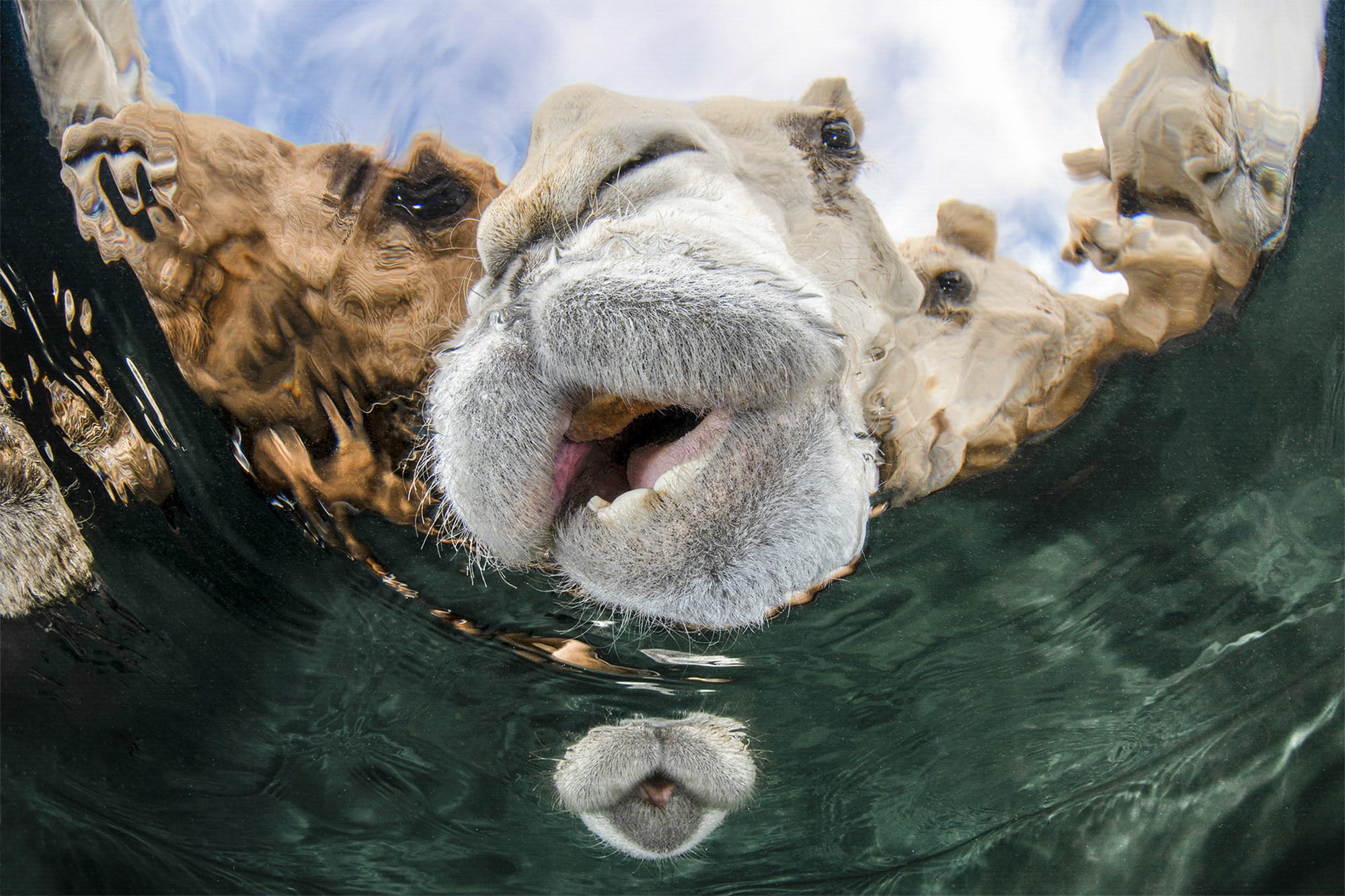This post was originally published on Colossal
Entering its 60th year, the Underwater Photographer of the Year Contest continues to be one of the most noteworthy international photography competitions. Surpassing last year’s numbers, the 2025 edition received more than 6,750 entries with winners from around 30 different countries.
From the depths of the Red Sea to the swamps of the Everglades, the notable images take viewers on a journey across the world, highlighting the diversity of ocean wildlife and emphasizing the importance of conservation. Diver and photographer Alvaro Herrero, a.k.a. Mekan, snagged the top honor this cycle with “Radiant Bond.” Off the coast of Mo’orea, a young whale still learning to breathe travels to the surface with its mother.

Among the other winning snapshots are scenes of two Asian sheepshead wrasse fighting in Japan, teeming coral reefs in Indonesia, a distorted portrait of camels hydrating in Kuwait, and a Florida gar circling its swampy habitat.
Read the context behind each photo and see more on UPY’s website.








Do stories and artists like this matter to you? Become a Colossal Member today and support independent arts publishing for as little as $7 per month. The article The Underwater Photographer of the Year Celebrates 60 Years of Wildlife Diversity appeared first on Colossal.





0 Comments